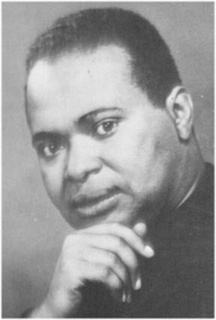When old age shall this generation waste,
Thou shalt remain, in midst of other woe
Than ours, a friend to man, to whom thou sayst,
“Beauty is truth, truth beauty,” – that is all
Ye know on earth, and all ye need to know.
(John Keats, from ‘Ode On A Grecian Urn’)
The Harlem Renaissance is regarded as a very important cultural movement and a significant contributor to the development of American literature. It materialized in the 1920s, although some accounts date it as early as 1919, and it evaporated some time in the 1930s. It included a great outpouring of Black American writing, producing some of the most acclaimed black writers of the twentieth century.
While it is called a ‘renaissance,‘ there are those who argue that that is a misnomer since there was a major flourishing of black writing in the late nineteenth century. Indeed, a good part of the Harlem Renaissance’s impact has to do not just with black writing, but the mark it made on the literature, music and culture of the United States generally, and there was such a mark among the writers of the period preceding the rise of Harlem. It may be found in the works of several such as William Faulkner, Mark Twain and O Henry among many others. Further, the Renaissance came at a time when American literature itself was undergoing a major upheaval in the wake of the development of Modern (and modernist) Literature in Europe, the great achievements of TS Eliot and the way Eugene O’Neill was transforming American drama.
 Incidentally, O’Neill himself had some personal contact with the sociology of Harlem life before his momentous rise in the theatre and produced “black” drama in The Emperor Jones and All God’s Chillun Got Wings. Among the impact on the theatre is the emergence of plays with serious black content which took root instead of the “blackface” tradition that preceded it.
Incidentally, O’Neill himself had some personal contact with the sociology of Harlem life before his momentous rise in the theatre and produced “black” drama in The Emperor Jones and All God’s Chillun Got Wings. Among the impact on the theatre is the emergence of plays with serious black content which took root instead of the “blackface” tradition that preceded it.

This great rebirth of culture and the arts took place in Harlem, a district of New York once known as a citadel of the white middle class. When they vacated the area they were replaced by Blacks through various dynamics of migration, and quite soon strong cultural currents began to flow. A few very interesting names have been associated with this energy that grew into the Renaissance, including James Weldon Johnson, Marcus Garvey and Claude McKay, and the publication of literary magazines.
One of the most important poets emerging from the Harlem Renaissance was Countee Cullen (1903-1946) who, according to Richard Barksdale and Keneth Kinamon (Black Writers of America) was viewed in some circles as something of a controversy as far as the black identity is concerned. He graduated from the Universities of New York and Harvard and so he was educated right ‘in the heart of Babylon,’ benefiting from the best of mainstream white American scholarship. In fact, he took creative writing classes and learnt about the techniques of English poetry (Barksdale and Kinnamon).
Cullen is often compared to Langston Hughes another of the leading lights in the Harlem Renaissance, because they both wrote poetry but also turned to fiction and drama.
Their drama is said to have made some influence in mainstream theatre for two different reasons. Hughes wrote the play Mulatto, which had much success on Broadway where it ran for one year because of its important attention to black issues. On the other hand, Cullen’s The Medea was successful and acclaimed for its literary merits and high lyrical quality as poetic drama (Barksdale and Kinnamon). In fact it is in these same areas that some critics took issue with Cullen. While he wrote on the black question in New York and on heritage and identity, he was not seen as revolutionary. In one poem he asks “What is Africa to me?” and debated the issue rather than proclaim himself African. Further, he seems to have developed a fascination with English Romantic poet John Keats, and devoted two poems to him.
The truth is that Cullen was interested in poetic form and produced his verses very much in the conventional verse of the late nineteenth and early twentieth century forms rather than the modernist styles that emerged and came into fashion after Eliot’s Wasteland (and O’Neill’s The Hairy Ape) of 1922. While he took on black issues as many of his colleagues in the Renaissance did, he was not always in protest mode and showed an equal concern for theoretical and intellectual issues. He wrote a tribute to Keats in one brief poem, and then engaged in an extended intertextual engagement with the Romantic in another.
To John Keats, Poet. At Springtime
I cannot hold my peace, John Keats;
There never was a spring like this;
It is an echo, that repeats
My last year’s song and next year’s bliss.
I know, in spite of all men say
Of Beauty, you have felt her most.
Yea, even in your grave her way
Is laid. Poor, troubled, lyric ghost,
Spring never was a fair and dear
As Beauty makes her seem this year.
I cannot hold my peace, John Keats,
I am as helpless in the toil
Of Spring as my lamb that bleats
To feel the solid earth recoil
Beneath his puny legs. Spring beats
Her tocsin call to those who love her,
And lo! The dogwood petals cover
Her breasts with drifts of snow, and sleek
White gulls fly screaming to her, and hover
About her shoulders, and kiss her check,
While white and purple lilacs muster
A strength that bears them to cluster
Of color and odor; for her sake
All things that slept are now awake.
And you and I, shall we lie still,
John Keats, while Beauty summons us?
Somehow I feel your sensitive will
Is pulsing up some tremulous
Sap road of a maple tree, whose leaves
Grow music as they grow, since your
Wild voice is in them, a harp that grieves
For life that opens death’s dark door.
Though dust, your fingers still can push
The Vision Splendid to a birth,
Though now they work as grass in the hush
Of the night on the broad sweet page of the earth.
“John Keats is dead,” they say, but I
Who hear your full insistent cry
In bud and blossom, leaf and tree,
Know John Keats still writes poetry.
And while my head is earthward bowed
To read new life sprung from your shroud,
Folks seeing me must think it strange
That merely spring should so derange
My mind. They do not know that you,
John Keats, keep revel with me, too.
(Countee Cullen)
Cullen alludes to some of Keats’ preoccupations, not least of all, his famous pronouncement on beauty and truth: “beauty is truth and truth beauty.” Keats has been called the essential Romantic because of his odes which put him in complete, some say “perfect” empathy with the moods of nature, and the way his existence is influenced by the vital inspiration that comes from its creatures such as the nightingale which he immortalised. His verses are sensual and quite in tune with nature. In Ode On A Grecian Urn he contemplates the urn with all its beautifully engraved scenes of past grandeur and cultures. The pictures are beautifully etched, but frozen in time, and often do not suggest fulfilment, though they may survive and will not perish with time, raising questions about time, truth and beauty.
Cullen’s poem seems to feel that something of Keats’ concern for beauty is missing in his time or his society. He seems to take inspiration from that kind of commitment to aesthetics and truth. It might well have been this concern that caused Cullen to put emphasis on poetic form in the expression of his black concerns. It is the results of these tendencies that led his critics to doubt his identification with the black cause. Cullen’s answer might well have been that why should the cause not be couched in beautiful poetry? He too, raises the question of what is beauty and its relations to truth.








